Catchpool Restoration Project - Remutaka Forest Park
Project Vision:
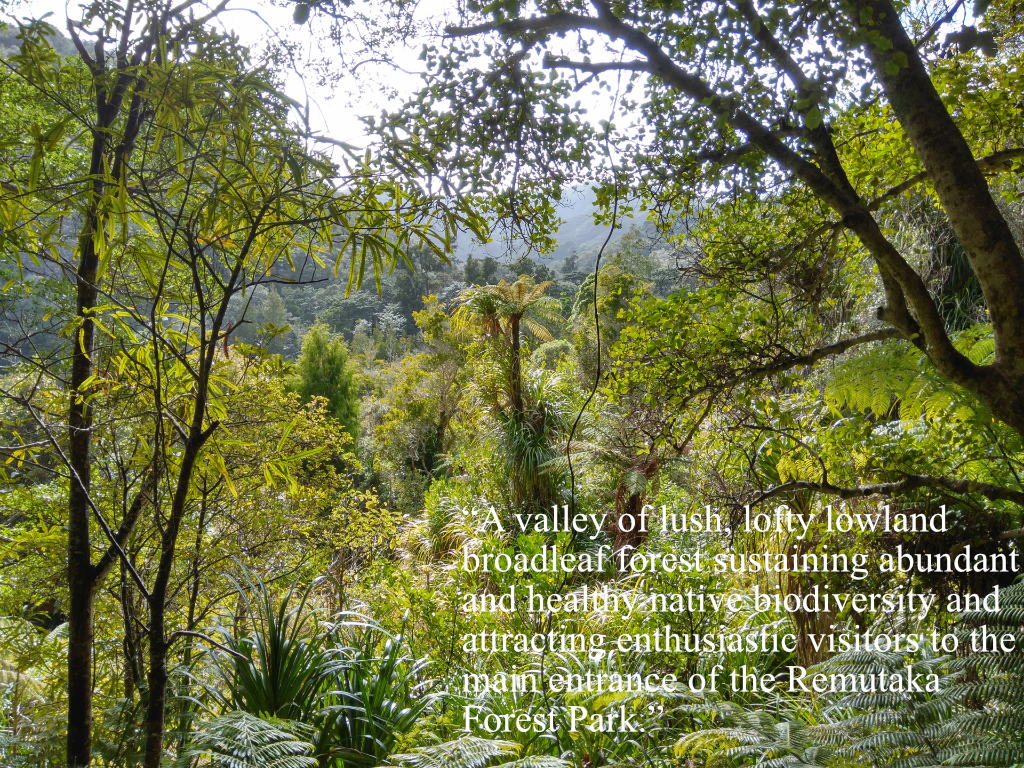
Vision Statement for the restored Catchpool
Valley superimposed on an image of the nearby lowland broadleaf forest
at Graces Stream, in our eco-hotspot. Photo credit: PC.
Catchpool Restoration Project - 2009 to present day
Large tracts of the 22,500 hectare Remutaka Forest Park are cloaked
in dense native forests and make up one of the largest untouched
contiguous areas of indigenous forest in the Wellington region.
The biodiversity and appearance of the Catchpool entrance to the
park, however, has been degraded historically by the introduction of
feral pests, saw milling, farming, and exotic forestry plantations.
When the pine forest plantation on the hills surrounding the lower
Catchpool Valley was clear-felled recently, many local residents felt
that the resulting denuded hills and gullies were an eyesore. (Actually,
more damage was done by the 'weather-bomb' and floods that devastated the area in
March, 2005).
With the clear-felling of the Radiata pine forest on the other side
of the Catchpool Stream over a ten year period following 1997 and the
visible devastation of the surrounding landscape, it was resolved to
re-forest the slopes and river valley once again with native plants in
an attempt to restore the biodiversity values and increase the
attractiveness of the area to tourists and regular visitors to the Park.
The Remutaka Conservation Trust has taken on the task of revegetating
the Catchpool in an attempt to restore its biodiversity values to those
that may have prevailed before human intervention occurred in the
valley.
This project aims to give Nature a helping hand to speed up the
reforestation of the hillsides with native plants and trees in order to
quickly restore the original biodiversity of the area and to provide
plenty of food and a healthy habitat for indigenous species of birds,
lizards, amphibians, fish and invertebrates.
Our simple strategy is to plant large numbers of different & desired
eco-sourced plant species in the gullies and other sheltered areas to
give them a head-start over natural regeneration processes. To ensure the health and well-being of the Catchpool and Graces Streams, we
engage in riparian planting and remove pest plants.
We have a permit to collect seed from the park (ensuring the
eco-sourced nature of our plant stocks) and grow them in our nursery
behind the DOC Field Centre, not far from the Park entrance.
Each year Trust volunteers, together with the welcome and able
assistance of hundreds of corporate volunteers and school children, then plant the native
species throughout the restoration zones during autumn and the winter
months.
In spring and summer, these same groups tend to those plants by
releasing them and undertaking pest plant removal and a myriad of other
site maintenance tasks.
Project Update Poster
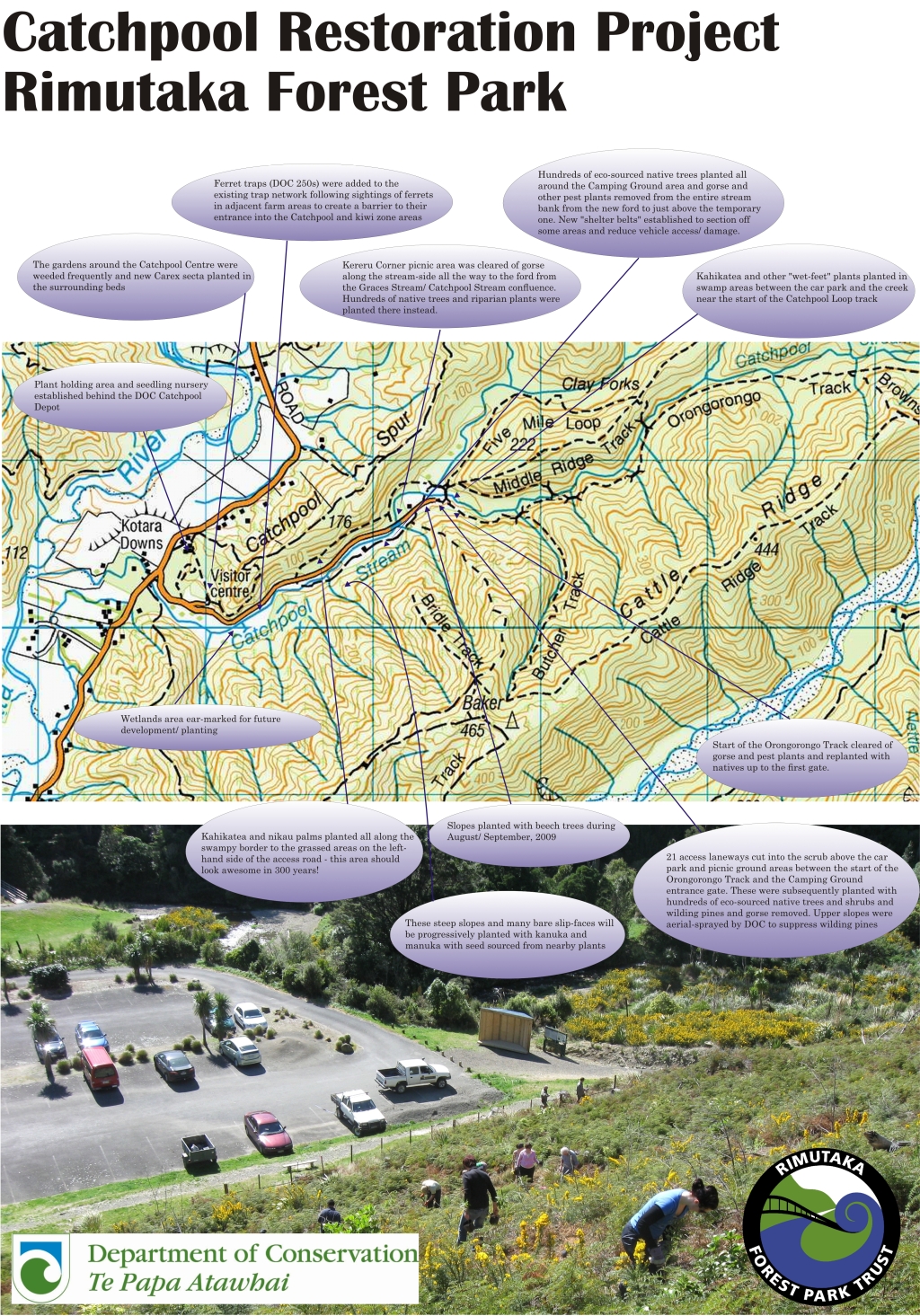
Project progress update poster created circa 2012. (Click the image to view or download the full-sized PDF poster).
Poster credit: PC.
Volunteers needed - Get Involved!
If you are interested in becoming involved in this project, please
contact our webmaster and Catchpool Restoration Project coordinator,
Peter Cooper. Many
thanks!
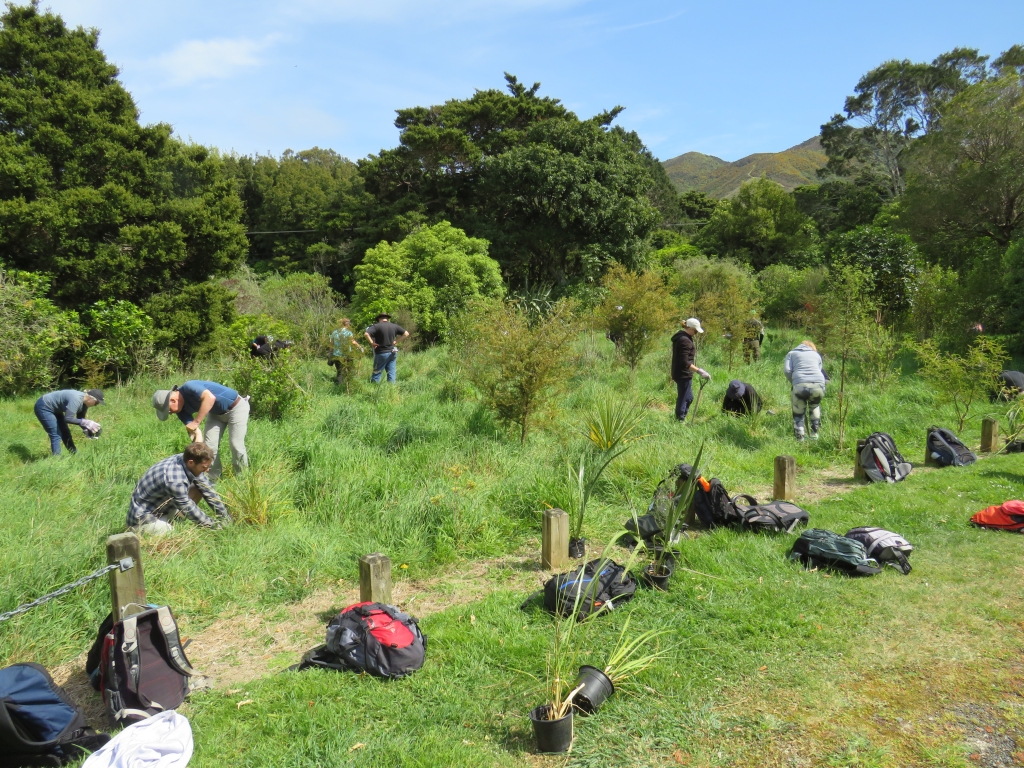
Corporate volunteers planting native trees on
their volunteer day down at the Catchpool Valley. The trees were grown
in our nursery from seed collected in the Park. Volunteer Days
contribute considerable value to our Catchpool Restoration Project and
offer great team-building experiences for the participants. Photo
credit: PC.
Project Documentation
These documents are provided as a reference resource for participants
and volunteers supporting the RCT Catchpool Restoration Project.
Community Conservation Fund
Press Release: June 17th, 2009
The Trust was successful in obtaining funding for this restoration
work in the park over the next two years. A total of $40,000
($20,000 a year) is available to purchase plants to restore some areas
in the Catchpool Valley where the pines have been removed.
The small pockets of existing native bush will be given a
helping hand with additional planting to create a more diverse range of
flora, thus creating a seed bank for further natural dispersal.
This also gives us the opportunity to perhaps re-introduce plant
species into the park which have become extinct in that area.
Additionally, it will
provide a great opportunity for community and corporate groups to take
ownership of a ‘plot’ and to maintain them on a regular basis.
If you are interested in becoming involved in this project, please
contact our webmaster and Catchpool Restoration Project coordinator,
Peter Cooper. Many
thanks!
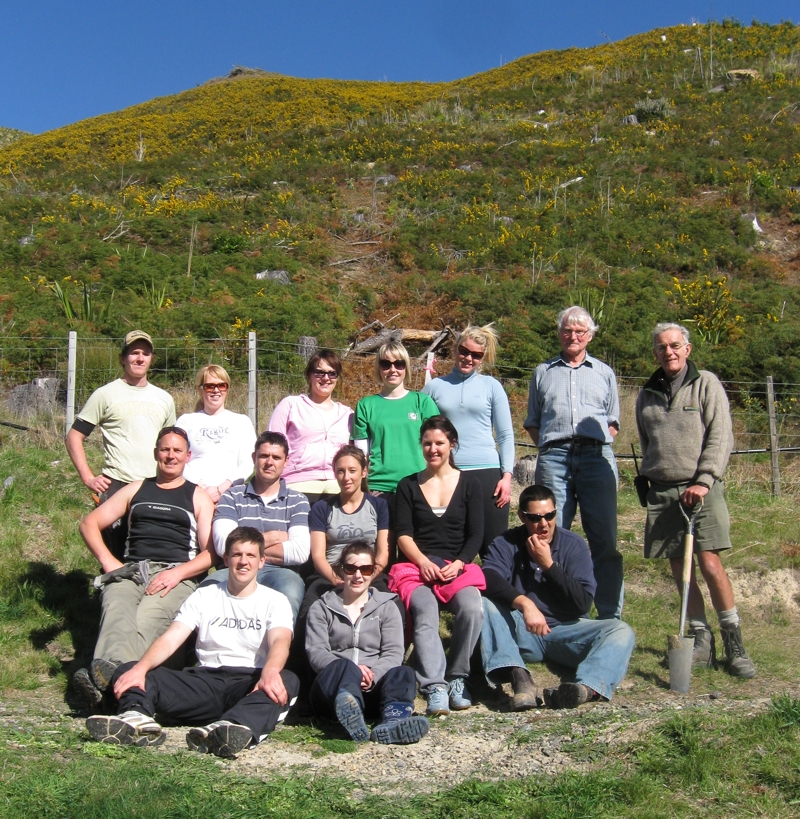
On a beautiful 2009 Spring day in the
Remutaka Forest Park, the
ANZ National Bank group are shown here after their terrific planting and
restoration efforts with Ian (RFPT) and David (DoC). Photo credit: PC.
Original Catchpool Restoration Project Outline
Project Charter
This project has been given legitimacy by Deed of Grant of $40,000 in
two instalments of $20,000 over two years from the Community
Conservation Fund. (Project Reference as follows from the DoC website)
Project number: CCF-051
Project name: Catchpool Restoration
Project
Organisation: Rimutaka Forest Park
Charitable Trust
Funded: $40,000
Brief description: “A grant of up to
$40,000 to the Rimutaka Forest Park Charitable Trust to assist with the
revegetation of retired logging areas in the Rimutaka Forest Park.
Specifically, the grant will assist with preparing the site for
planting, and the purchase of native eco-sourced plants for revegetating
the site.”
The Rimutaka Forest Park Trust committee originally endorsed the
pursuit of this grant during 2008 and are keen to execute their
obligations under the charter. At the June 9th 2009 committee meeting,
RFPT member Peter Cooper was appointed as the project coordinator for
this undertaking.
A formal acceptance and thank you letter was sent by Trust Secretary,
Melody McLaughlin to Alan White, Fund
Manager, Biodiversity Funds, Community Conservation Fund and TFBIS
Programme at the Department of Conservation on the 30th April, 2009.
Problem/ Opportunity Statement
Creating a better “first impression”
The Catchpool Valley access road from Wainuiomata Coast Road to the
car park at the start of the Orongorongo Track is the first area of the
Remutaka Forest Park that most visitors see. It is easily the most
accessible and popular entrance to the Park (with more than 70,000 local
and overseas visitors per year.)
The camping ground and picnic areas in the Catchpool Valley are
frequently used during the summer months and thousands more people enter
and exit the Park via this corridor throughout the year on their way to
and from the many excellent tracks and huts within the Park.
Unfortunately, the hillsides above the Catchpool Stream on the South
Eastern flank entrance to the valley are looking bare and scarred
following the recent clear-felling of the pine forest that was planted
there in the 1960s – and further devastated by the “weather bomb” and
consequent floods/ erosion that struck the area in March, 2005.
Many locals claim that it is an eyesore, with the entrance to the Park
not nearly as attractive as it used to be.
Our opportunity here is to create a better first impression for new
visitors to the Park; and a steadily improving vista for regular
visitors and critical local residents.
More importantly, we will be creating a better habitat for native
flora and fauna - and there is the additional tantalising opportunity to
re-establish species that once were present in the Park but now are
missing.
Original Project Objectives - 2009
- Restoration of a retired logging area in ‘nodes’ - starting in
gullies where small pockets of remaining native vegetation can be
enhanced and expanded to encourage birds for natural seed dispersal.
- Extend the streamside/wetland planting to reduce flooding and
erosion and ensure clean water for the native fish species found in
the tributaries such as kokopu, koaro and koura.
- Establish ridge plants alongside proposed tracks to further
encourage wildlife and provide a range of vegetation necessary for
ecological diversity.
- Provide an increased opportunity for different sectors of the
community to be involved and engaged in conservation in the Park.
Mission Statement
The Trust’s original mission was:
“To protect and restore the natural and
historic resources of the Remutaka Forest Park valleys and environs, in
order to contribute to the spiritual, mental, emotional and physical
well-being of the wider community”
This project will allow this by
- Restoring corridors and providing seed banks for native
bird dispersal
- Accelerating natural regeneration through the use of
‘nodes’ of plantings that are representative of a variety of
ecosystems
- Benefits to the community through engaging with a wider
audience in conservation
- Providing opportunities to the community and corporate
groups to do hands-on conservation work thus increasing their
understanding of conservation and the importance of restoration
- Improving the survival rates of threatened species
- Reintroduction of native plant species that once were present in
park but which are now absent due to previously out-of-control
browser pests.
2018 Revised Project Objectives:
- Restore vegetative communities characteristic of the
Remutaka range valley ecosystems.
- Provide and extend high quality habitat for the indigenous
fauna of the Remutaka ranges.
- Enhance the aesthetic value of the valley, particularly the
south eastern valley slopes.
- Provide a means for community engagement and education in
the valley.
The Trust sees this as a natural extension of the work currently
being undertaken in relation to fauna restoration, understanding the
connective nature of the flora and fauna to establish a natural habitat
and food source for native birds and create an environment that links to
our long-term goals.
Short term: Meet the increasing
desire from the community groups/education and businesses (corporate
organisations) to actively participate in conservation efforts in the
park - one of the best ways to achieve this is through restoration
projects building up the resource pool of volunteers to support the long
term goal. Actively encourage more people into the park to create a
positive environment and a sense of ownership to the place through
hands-on involvement.
Long term: Establish an ongoing
restoration network of groups and individuals who will take
responsibility and maintain the ongoing plantings, accelerating the
natural regeneration of native flora within the park by creating the
‘nodes’ of planting to act as seed sources this will in turn support the
Trust's objectives to re-introduce other species, both flora and fauna,
back into the park.
Project Vision
“A valley of lush, lofty lowland
broadleaf forest sustaining abundant and healthy native biodiversity and
attracting enthusiastic visitors to the main entrance of the Remutaka
Forest Park.”
Sponsor a Tree - $50
For the next 300 years or more you can come back to the Remutaka
Forest Park to admire your chosen native tree planted in a lovely spot
for future generations to enjoy!
You can choose from a wide range of eco-sourced native trees, some of
them quite rare and valuable, and either plant it yourself down in
the Park with our assistance and guidance, or we'll plant it for you if
you cannot be there on the day.
Your sponsorship helps to pay for the plant and its care for those
crucial first years of life, including nursery propagation, planting and
releasing/ protection from pests etc. until its healthy establishment.
If requested, we'll provide you with a certificate with a GPS-mapped location shown
for your chosen plant and general information about how your plant fits
into the local ecology - what birds and other critters it feeds or
provides haven for - and other pertinent information.
Please email
sponsors@remutaka.nz with your
donation amount and contact details. You will receive a receipt and we
are a registered charity (CC37211) for tax deductible claims.
Deposits can be made directly to Rimutaka Forest Park Charitable Trust
38 9024 0505274 00 (make sure that you also include your surname so that
we can associate the payment with your donation)
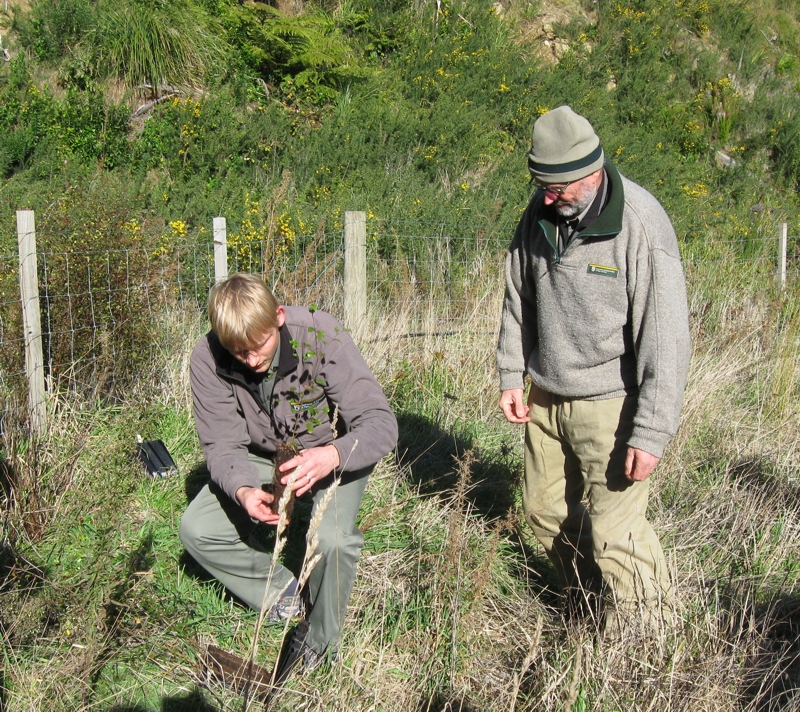
Brent Tandy and Peter Simpson demonstrate the careful unpacking
and replanting of native hard beech seedlings to volunteers and fellow
DoC staff members who turned up in numbers during our initial Catchpool
Restoration working bee. Without our help, Nature would take hundreds of
years to regenerate beech trees in this area.
More than 150 of these trees were planted that morning.
(Photo credit: PC)
Making a Start...
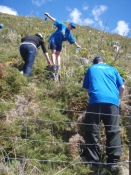
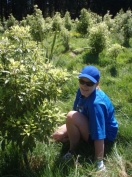
BNZ Call Centre staff
clearing the way for planting, and releasing existing plantings in the
Catchpool.
Photos Credit:- Melody McLaughlin
Original Project Map of the Catchpool Restoration Area
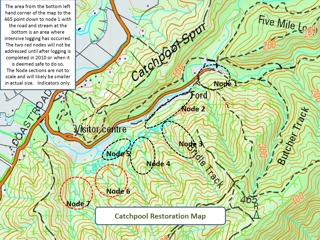
Click the map for a larger image (256kb PDF format)
Here's a map of the areas in the Catchpool Valley that were targeted
for the first round of plantings. We were hoping to source and plant
about 30,000 native plants and trees during the first two years of this
project.
Current Project Map of the Catchpool
Restoration Area
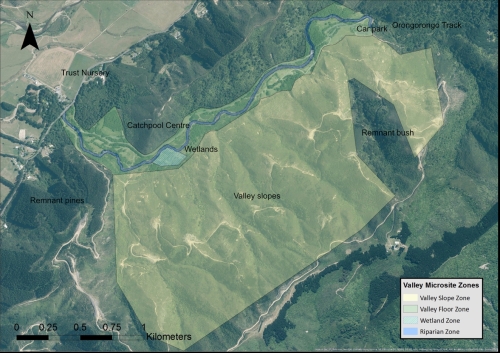
Map showing the new Restoration Zones applying to the revised
Catchpool Restoration Project Plan (2018). Click for a larger view.
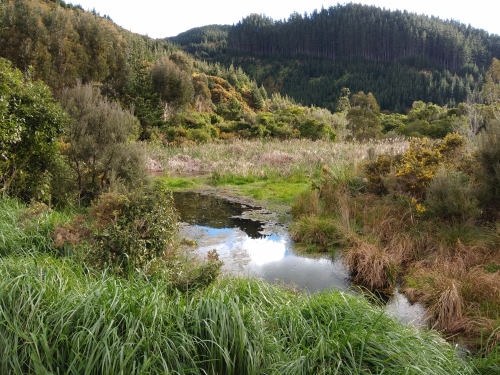 This
photo shows a small section of the wetlands site in the lower
Catchpool Valley that has been designated for restoration in the
next few years. (Click for a larger view). Photo credit: PC.
This
photo shows a small section of the wetlands site in the lower
Catchpool Valley that has been designated for restoration in the
next few years. (Click for a larger view). Photo credit: PC.
In the background, you can see the remnant pine forest that will be
harvested in 2020 and replanted with native trees. Eventually, most of
the exotic species shown here will be replaced by eco-sourced natives.
Catchpool Nursery
The Trust has recognised that eco-sourcing cannot be guaranteed
through local commercial nurseries and has since gained a permit from DOC to
collect seed within the park and set up its own nursery.
The nursery is located behind the DOC Field Depot just off the
Coast Road near the entrance to the park.
The plants used in enrichment and revegetation planting
efforts will be sourced from seed & cuttings collected within the
Remutaka Forest Park and grown in the Trust’s nursery. Plants grown
will be held at the nursery on site until planting, hardening them
to the local conditions. More details
here...
Nursery Group
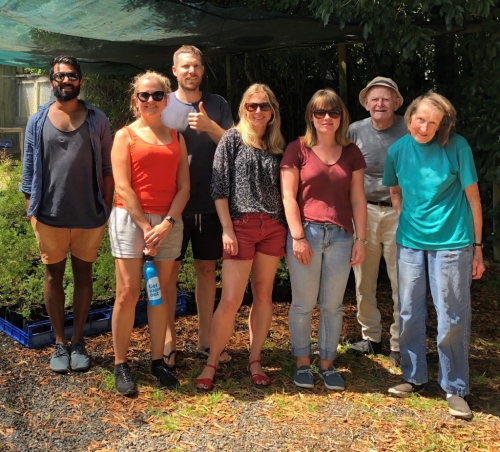
Mike Rees (thumbs up) and his nursery
group on a working bee down at the Catchpool nursery in February
2020. (Click for more details about our nursery).
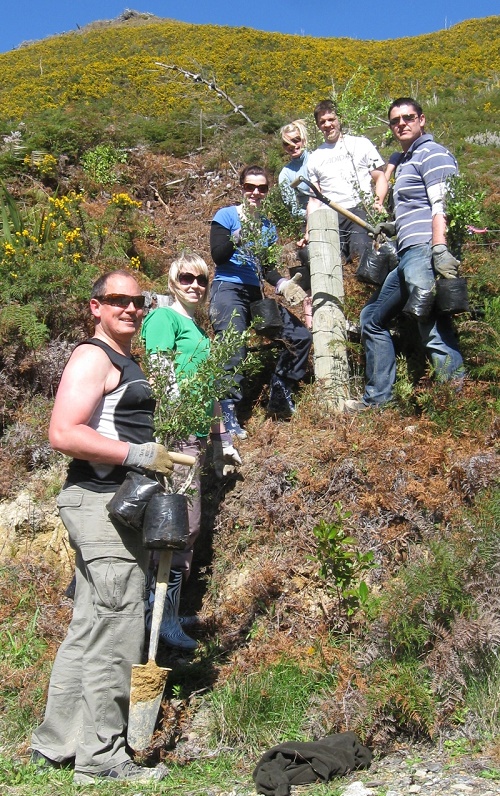
Some of the team from ANZ National Bank
heading up the slopes to plant their trees above the Catchpool Car Park.
Photo credit: PC
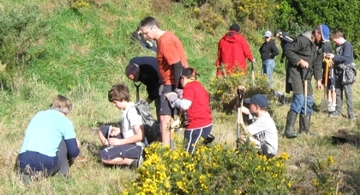
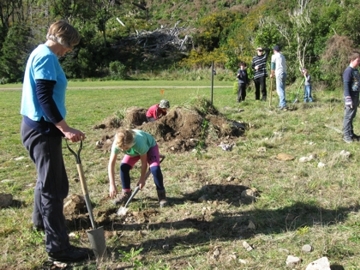
(Above) Families planting native trees during a Belmont Scouts
Volunteer Day, Catchpool Valley, Remutaka Forest Park. Photos credit:
PC.
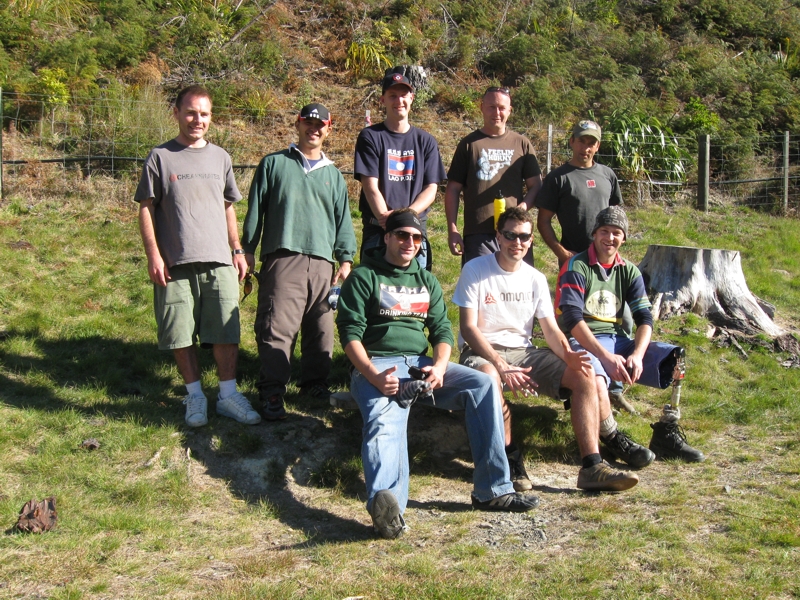
The lads from EFTPOS NZ Ltd planted more than
260 trees on their volunteer planting day in the Park during September.
(Click for a larger image).
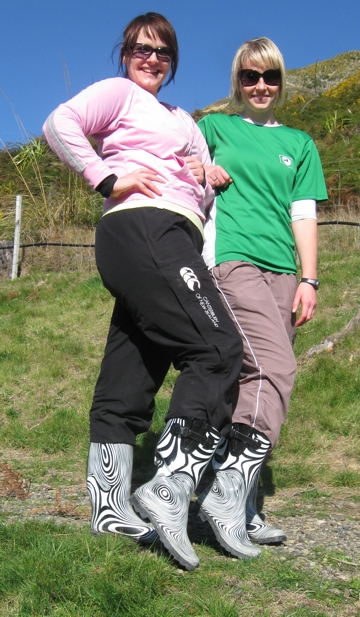
Melissa Middleton & colleague proudly show
off their designer gumboots during their community volunteer day's
planting efforts. Photos credit: PC.


















